Lingua fences is a game that mixes the word play of games like Scrabble1 with the territorial control of Go2. Players compete to enclose regions of a grid with carefully chosen words that intersect with each other.
I developed this game to play with my advanced ESL students, the ones enrolled in my B2 and higher classes, but some of them had difficulty with it and I had abandon that. Then I tried to play with adults, but despite being highly-educated (Masters and PhDs) and generally brilliant people, they were nevertheless not native English speakers and struggled. To be honest I have never had the opportunity to play this game with anyone in a position to be really good at it. All of the rules below are as yet not adequately play tested and are just my best guess at what would be most fun to play. If you’re a super duper hard core word game geek and your friends happen to be as well, I’d greatly appreciate your feedback.
Who can play
Lingua Fences can be played by two or more players. To get the most enjoyment out of the game, players will need to have very broad lexicons and be adept spellers. This is a hard game!
Materials
You will need a sheet of graph paper and a pencil (and maybe an eraser) for each player. I’ve made a made an official printable sheet that has a 19x19 grid, a clearly marked starting space (explained below) and a place to keep notes (also explained below). As I explain the rules of the game here I am going to assume you are using this sheet. You can download a copy here:
I can also recommend Incompetech’s website where you can create graph paper to you own specifications:
https://incompetech.com/graphpaper/
How to play
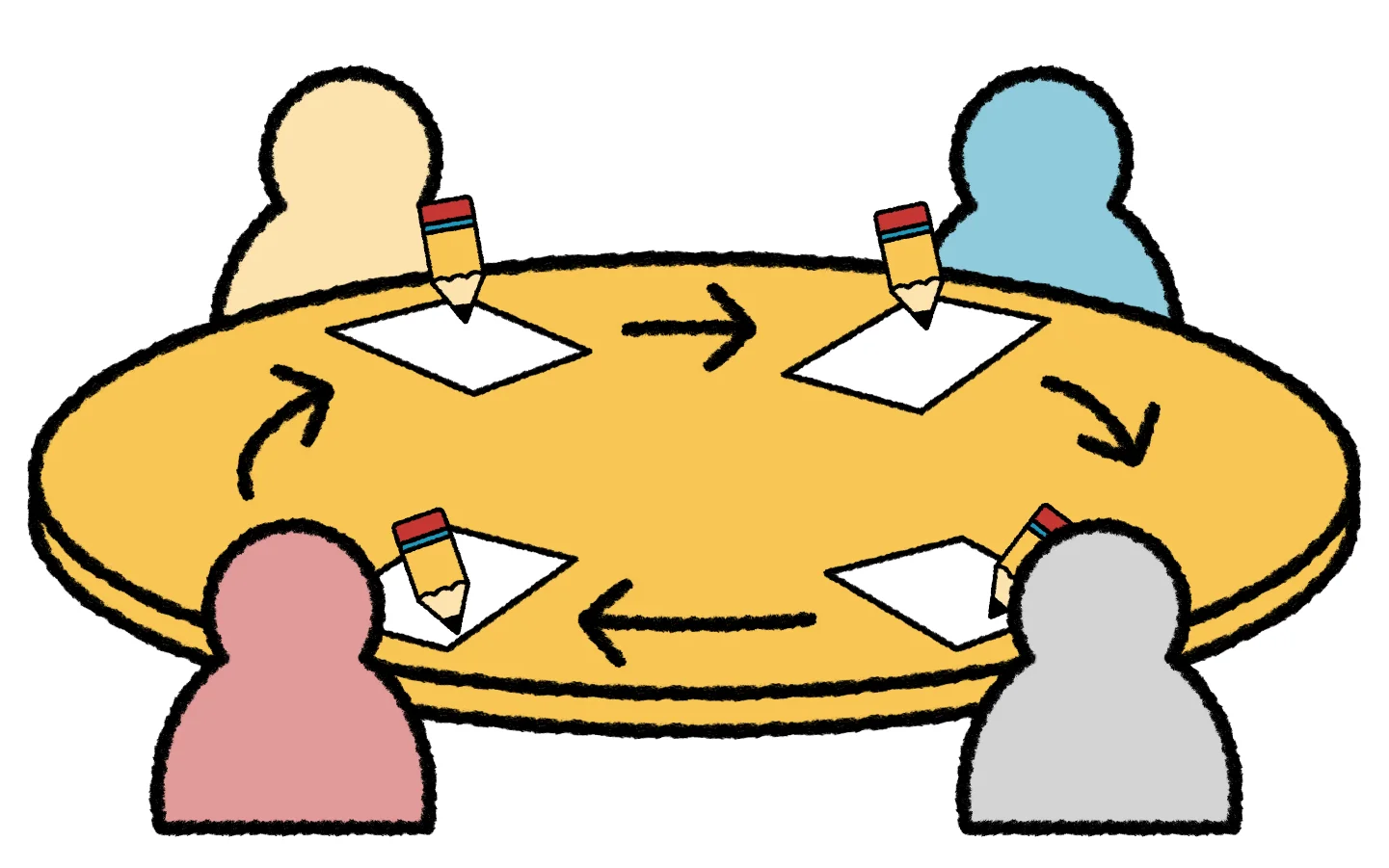
The basic game loop involves every player writing a word on a grid and passing the sheets around in a circle. While doing this each player is trying to enclose regions of the grid. Bigger regions award more points. The player with the most points, that is, the player who has enclosed the largest cumulative area, is the winner. There are, naturally, some rules to follow while playing.
How to write the first word
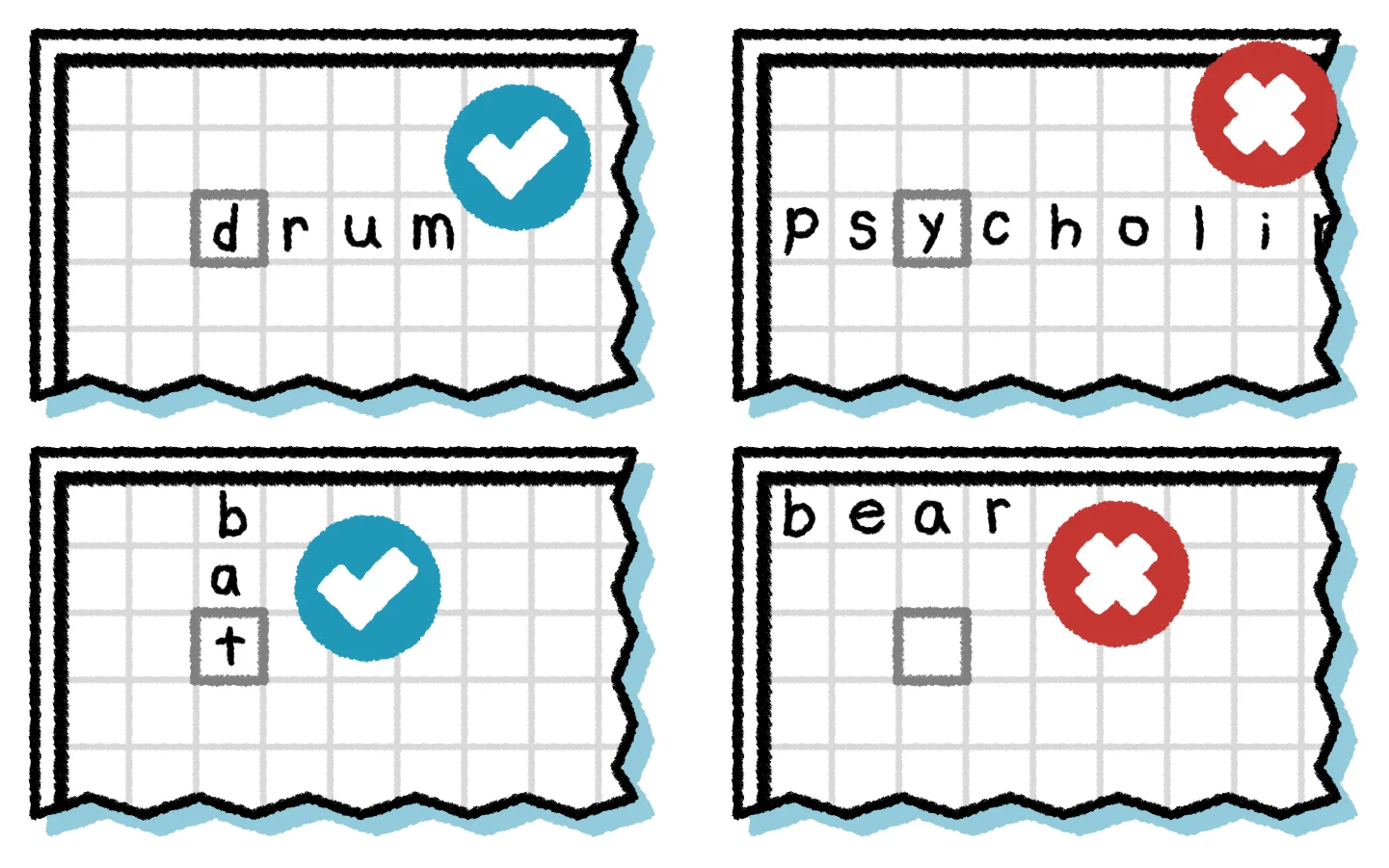
Every player receives one sheet of paper like the one you can download above. The square near the top left of the grid that is surrounded by a darker line is the starting square. Each player must write a word that intersects with that square. This word may begin in the starting square, finish in the starting square, or overlap it somewhere in the middle. The word must be written either left-to-right or top-to-bottom. Only one letter can be written in a square. The word may contain a minimum of two letters and a maximum of four letters. Longer words are possible later in the game and are explained below.
After every player has written a word all players pass their sheets to the player on their left at the same time.
How to write all subsequent words
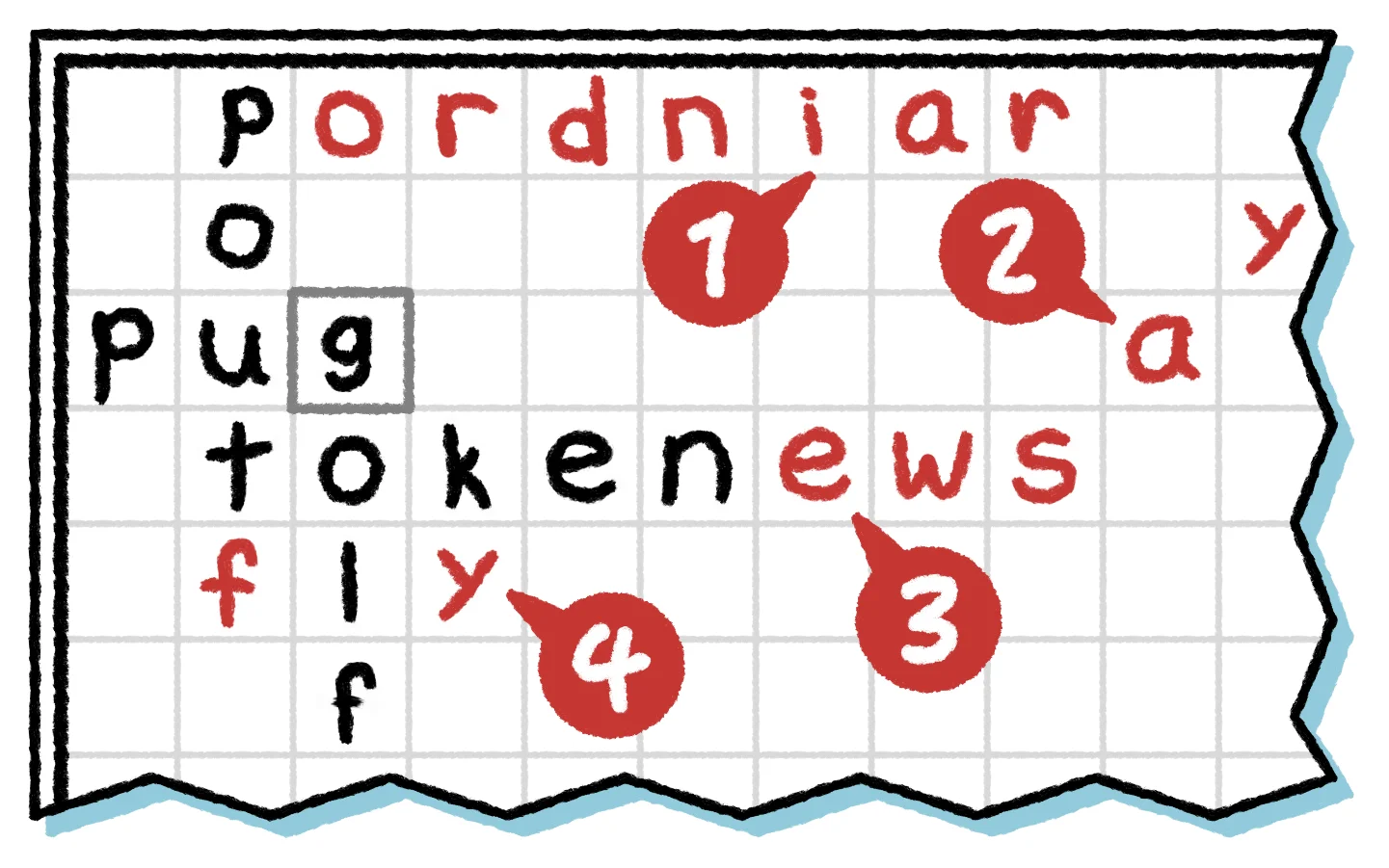
All subsequent words on a board must overlap another word that is already on the board. Just like the first word, they must be written left-to-right and top-to-bottom. Any two adjacent letters must be a part of exactly one valid word, which in practice means that you cannot chain words in a straight line and parallel words must have at least one empty space between them.
Maximum and minimum word length
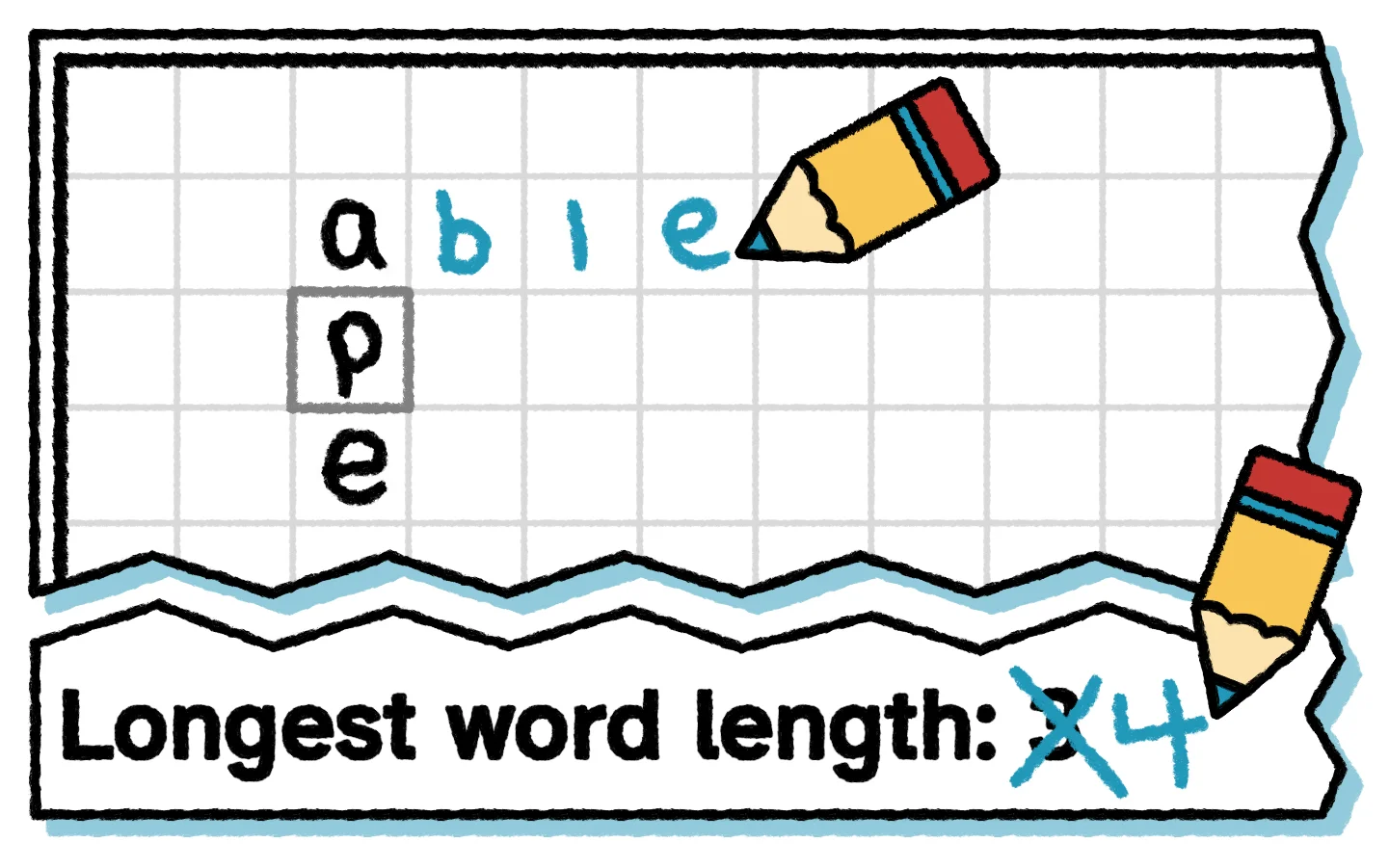
The longest word a player can write on a particular sheet during a turn is 1 letter longer than the longest word already on that same sheet. For example, if the 6-letter word turtle is on a sheet, then a player could write the 7-letter word rainbow but not the 8-letter word libraries.
There’s a space at the bottom of the sheet for keeping track of the longest word. If a player writes a word that is one letter longer, as is allowed, then that player must cross out the old number and write the length of the new longest word. The official sheet starts with a 3 in this location, so the longest word length on the first turn would be 4.
You can always write a word that is equal to or shorter than the longest word, to a minimum of 2 letters.
Extending existing words
Players may extend a word already on the board with a prefix or suffix as long as the new word follows the other rules for valid words.
Getting points
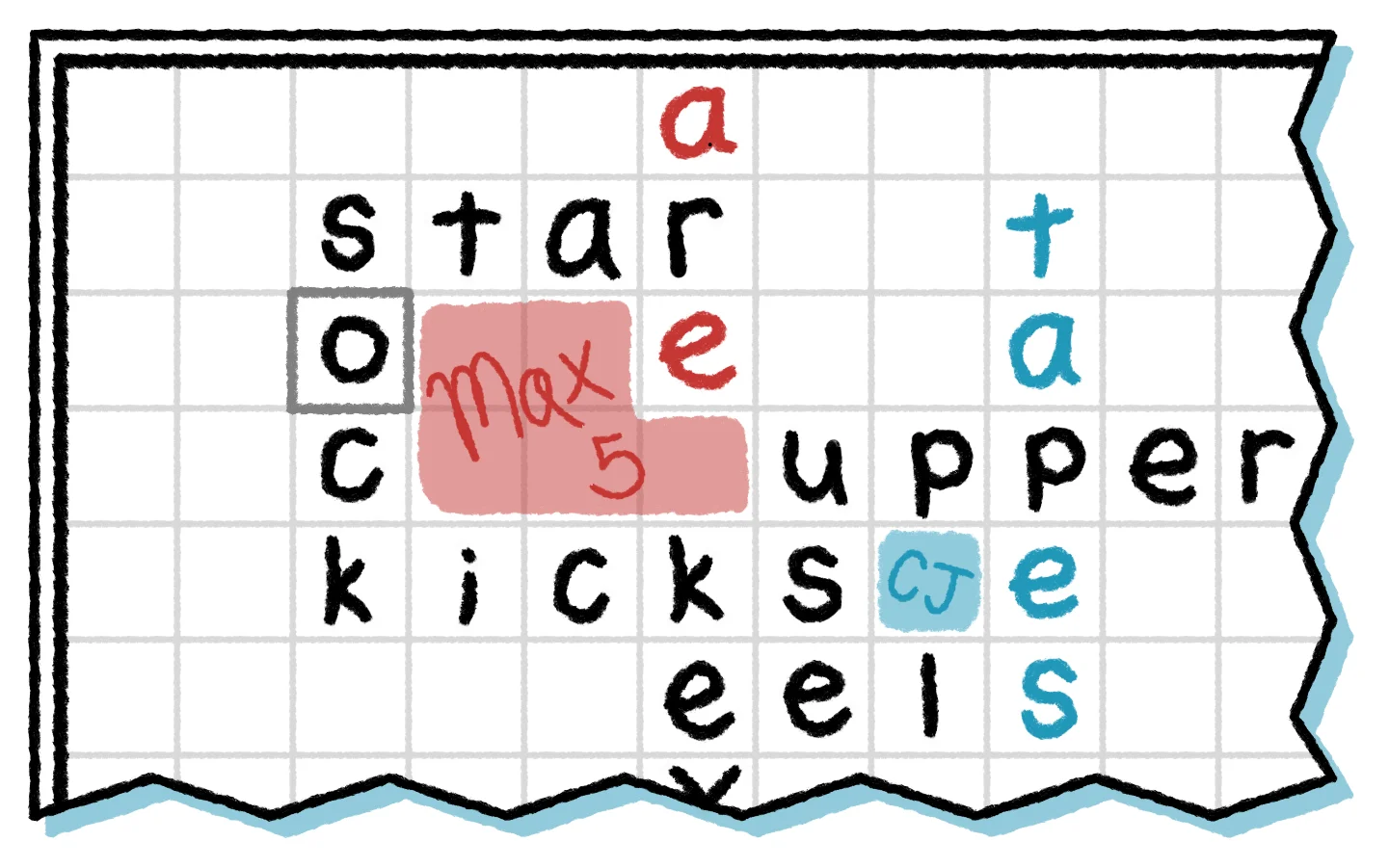
Whenever a player writes a word that completes the enclosure of an area within the grid, then that player is awarded points equal to the number of empty squares inside of that area. Because enclosing an area effectively also encloses the inverse area (think about it), always the smallest enclosed area is that one that is claimed. If these areas are equal, then the player may choose one.
A player who encloses an area should mark their claim by writing their name or initials inside of it. They can also, for example, draw an outline around the area or lightly shade it in. It’s also usually helpful to write the point value as well.
The edges of the grid can enclose areas of the grid, but only on one side.
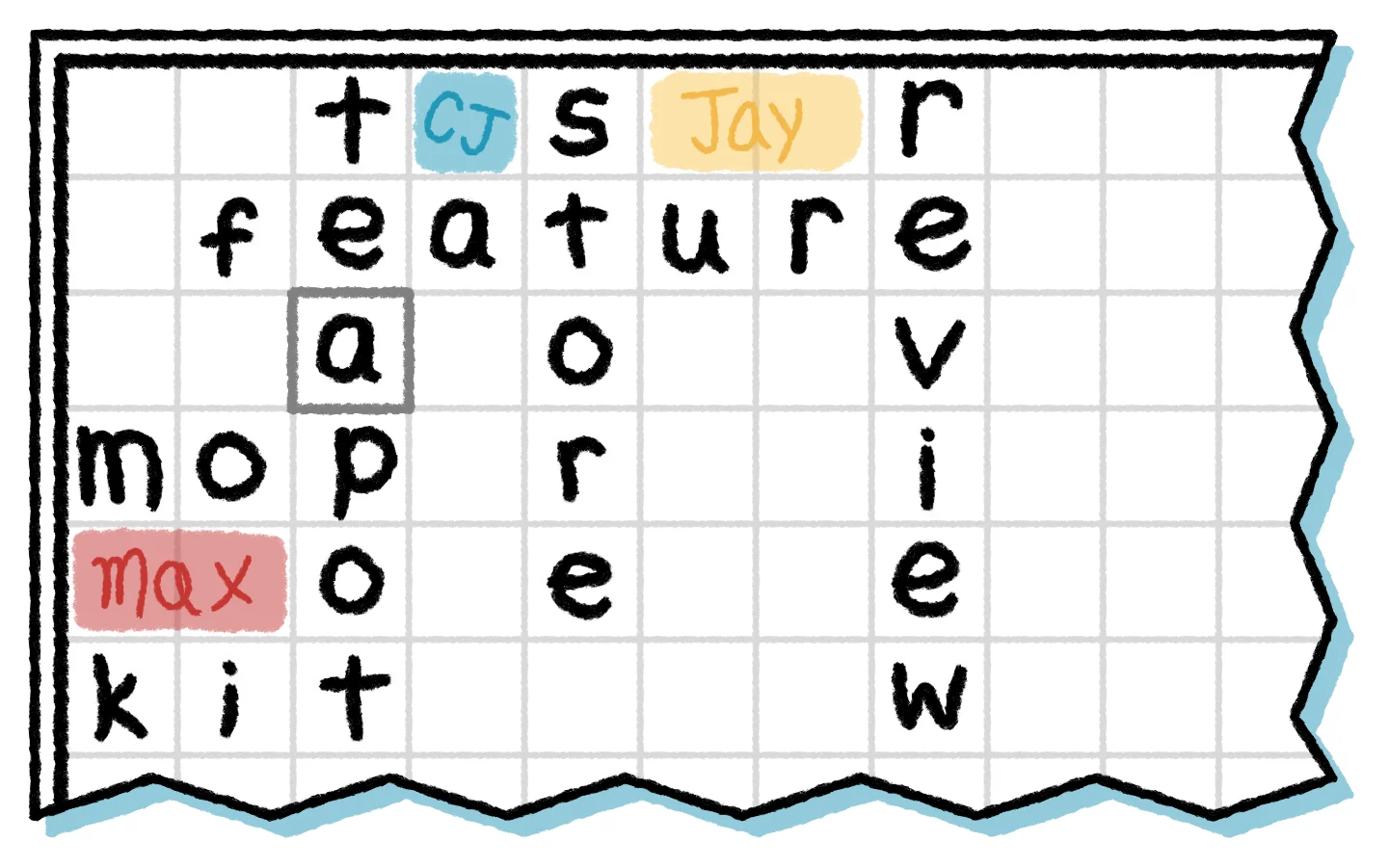
Passing a turn
A player may choose to pass their turn with a sheet and not write a word. However, the next player will be allowed to two words. If two players pass their turns on the same sheet in a row, then that sheet is taken out of the game. Turn it over to signify that is no longer in play, but continue passing it around. Players who receive this sheet may not write any more words on it. If they want to be helpful they can tally up the points each player has won on that sheet.
Finishing the game
When all of the sheets have been taken out of the game as described above in Passing a turn, then the game is finished. Tally up all of the points won by every player on every sheet. The player with the most points is the winner.
Variations
- When I play this game it’s always limited to English, but of course this game could work well in many other languages—maybe simultaneously!
Considerations
-
Please wait until everyone has finished writing a word and then pass all of the papers simultaneously. It’s not unlikely that one player needs some more time to think and if players just pass their paper as soon as they’re finished the slower player will have a pile of papers build up next to them. That kind of pressure takes the fun out of the game.
-
The rules for most games like this limit valid words to something you might find in a dictionary, but that’s just a convention. Before you play, decide what constitutes a valid word. Maybe you’d like to include obscure onomatopoeia or names of fictional characters.
-
Writing names within captured regions might make thing difficult to visually parse as the game progresses. Players may want to decide on non-alphabetic symbols to represent themselves or to shade regions in with a colored pencil.
Related posts
Relay Writing is a game about spelling words or writing sentences that’s a better fit for classrooms with young learners. If you’re looking for something that’s still challenging but less wordy, try Mathy Card Game.
